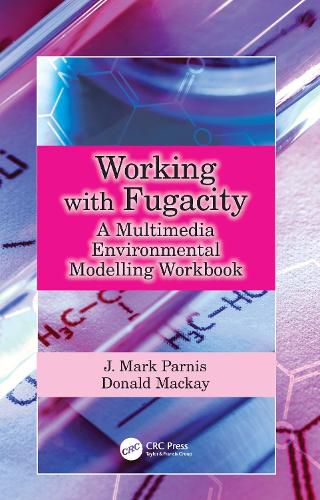Readings Newsletter
Become a Readings Member to make your shopping experience even easier.
Sign in or sign up for free!
You’re not far away from qualifying for FREE standard shipping within Australia
You’ve qualified for FREE standard shipping within Australia
The cart is loading…






Multimedia environmental models are powerful tools for predicting the fate and distribution of
chemicals in the environment. They are used for assessing the potential exposure of ecosystems and
humans to contaminants, as well as for developing and evaluating chemical management approaches.
This book has been developed with the aim of providing support to students and researchers who
are new to fugacity-based environmental modelling or wish to refresh their knowledge and skills.
The nature and approach of fugacity-based calculations is developed methodically and sequentially
from very first steps, with computational details explicitly shown and discussed. Whereas our text
"Multimedia Environmental Models: The Fugacity Approach" gives detailed justification for the
theoretical underpinnings of the fugacity approach, this workbook instead focusses on the step-bystep
exposition of computational details and approaches without excessive theoretical justification.
We believe that this approach will serve to help clarify the necessary computational steps and
approaches needed to design and implement fugacity-based computations in real-life environmental
contexts.
$9.00 standard shipping within Australia
FREE standard shipping within Australia for orders over $100.00
Express & International shipping calculated at checkout
Stock availability can be subject to change without notice. We recommend calling the shop or contacting our online team to check availability of low stock items. Please see our Shopping Online page for more details.
Multimedia environmental models are powerful tools for predicting the fate and distribution of
chemicals in the environment. They are used for assessing the potential exposure of ecosystems and
humans to contaminants, as well as for developing and evaluating chemical management approaches.
This book has been developed with the aim of providing support to students and researchers who
are new to fugacity-based environmental modelling or wish to refresh their knowledge and skills.
The nature and approach of fugacity-based calculations is developed methodically and sequentially
from very first steps, with computational details explicitly shown and discussed. Whereas our text
"Multimedia Environmental Models: The Fugacity Approach" gives detailed justification for the
theoretical underpinnings of the fugacity approach, this workbook instead focusses on the step-bystep
exposition of computational details and approaches without excessive theoretical justification.
We believe that this approach will serve to help clarify the necessary computational steps and
approaches needed to design and implement fugacity-based computations in real-life environmental
contexts.